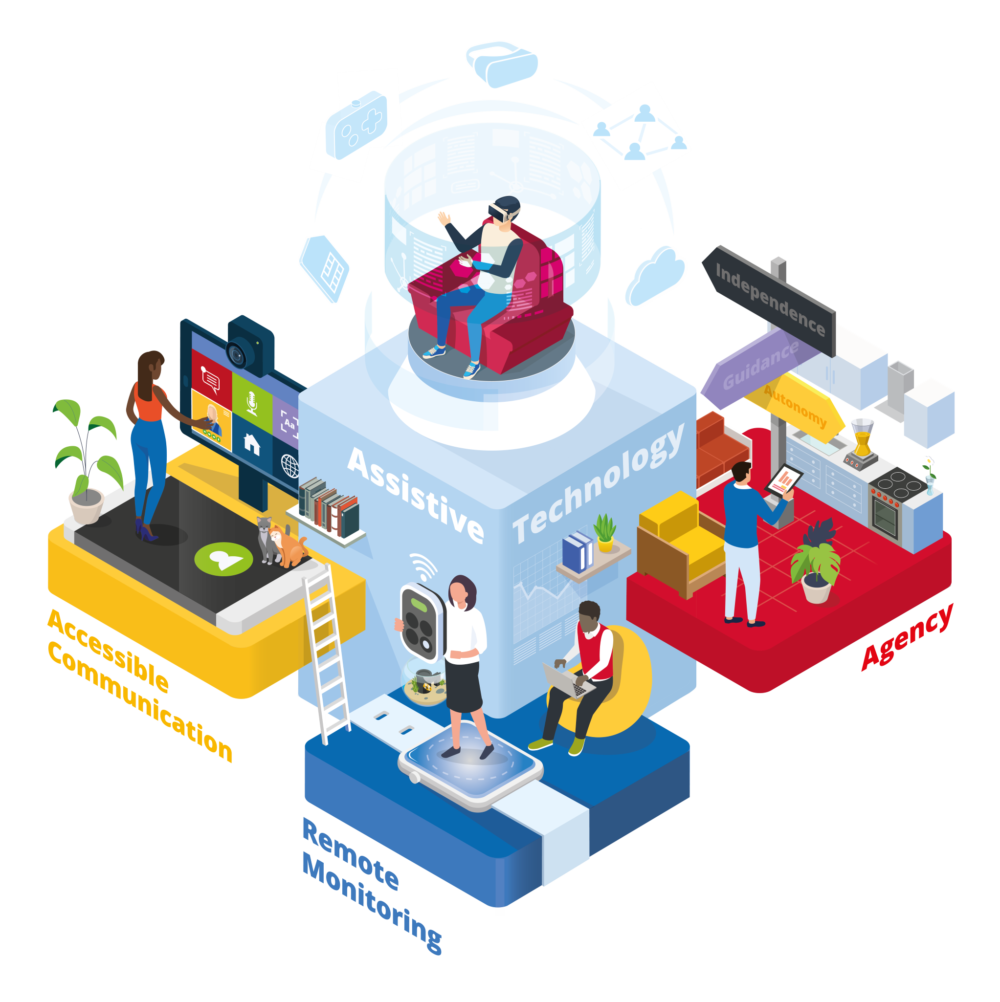
research
Learning Disability Tech Landscape Review
The third instalment in our series of technology landscape reviews.

The COVID-19 pandemic has dominated the health and care narrative since March 2020. It is abundantly clear that not all groups have experienced the pandemic in the same way. As more evidence has emerged, the statistics have painted a grim picture of the impact of COVID-19 on the learning disability community, where people with a learning disability are five times more likely to be admitted to hospital, and eight times more likely to die from COVID-19 than the national average.
While the pandemic provides an immediate context for the care sector, the Health and Care Bill is defining plans for the integration of health and care services through integrated care systems (ICSs). A long-awaited plan for social care reform appears to have been replaced by a 1.25% national insurance levy to address elective procedure backlogs and help with a limited number of concerns for care provision. These plans have received criticisms for only addressing a small portion of the problems facing the sector and not taking a more comprehensive structural approach. More recently however, the Government have announced plans for a comprehensive review of health and social care leadership. The National Disability Strategy was published in July 2021 and highlighted a key role for technology in learning disability.
Technology is performing an ever-increasing role in the provision of health and care and improving the lives of many people and for those with learning disabilities it is helping to engage and connect with the world. There are unique opportunities and challenges for the learning disability technology sector and user led design and user experience (UX) are key to successful products and services.
This report, the Learning Disability Tech Landscape Review, is the third instalment in a series of technology reviews. This vital research clearly defines the different types of technology enabling learning disability care provision, map the sector’s developers and technology providers, and explore the associated functional applications.
“As more of the population starts to return to what might be considered more normal, there is still a large part of the community that cannot. “There are several Bills, strategies and plans lined up to try and tackle the issues faced across social care, including some focused policy on learning disability. However, while it has been acknowledged that there is a role for new technologies, the funding and support currently on offer is not going to meet the specific needs of much of the sector. “There is also an important role for self-advocacy groups for advice on the design of user-centric technologies, whether they might actually be wanted or needed by those likely to use them. It is also important for clinicians to have a better understanding of the unique healthcare needs of individuals with a learning disability and to consider how technology could support care access and provision.” Dr Peter Bloomfield, FCC's Head of Policy and Research
We are keen to expand the research and improve the quality of the data, hence we encourage any startups to contact us (research@futurecarecapital.org.uk) if they are not currently represented in this piece and believe they should be.

